Top dressing of onions in spring and summer for good development and harvest
Obviously, your search for information on how and what to feed onions in spring and summer is associated with the desire to get large and tasty bulbs. After all, it is for this purpose that additional fertilizers are introduced. Although, if you initially brought all the necessary nutrients to the garden for digging, then this is not at all necessary - the onion will receive everything anyway, the more potash and phosphorus fertilizers need time to dissolve. But most likely, you did not, therefore, you want to perform direct feeding during the growing season.
About when, how correctly and what you can feed onions in spring and summer in order to get a good harvest will be described in detail in this article.
By the way! There is no difference in the spring feeding of winter (planted for the winter) and spring (planted in spring) onions.
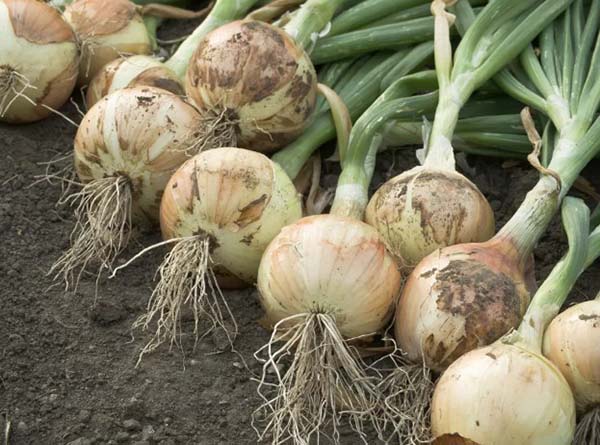
Content
When to start feeding onions in spring
At the initial stage of development, onion sets take food for forcing greens (feathers) from their small onion. So, when the arrow has already been driven out (reaches a height of 15-20 centimeters), the plant will already begin to take food from the soil (by this time, the root system is just forming), it is at this moment that you need to carry out the first spring feeding onions with nitrogen fertilizer.
Naturally, at different stages of development, onions require different fertilizers = different nutrients.
A brief scheme for feeding onions in spring and summer is as follows:
- at the beginning of the growing season (after regrowth of greens-arrows 15-20 cm) - nitrogen fertilizer (for building the aboveground part - greenery);
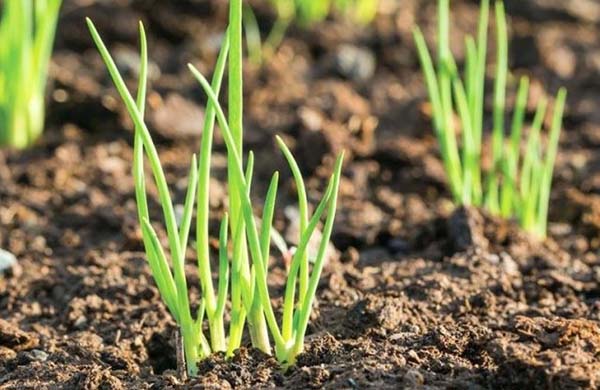
- at the time of the beginning of the formation of the bulb (about 3-4 weeks after the first) - phosphorus-potassium dressing (for building up the underground part - the bulb).
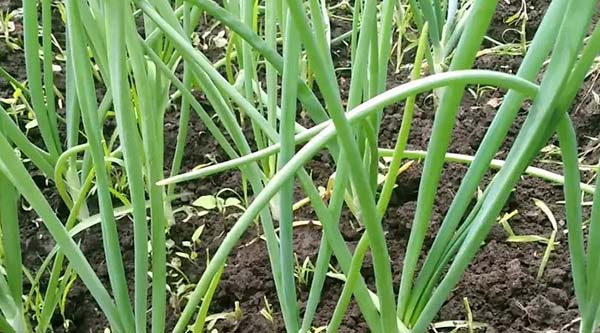
Note! In no case should you use nitrogen fertilizers during the period of bulb formation, otherwise it will postpone their ripening and negatively affect keeping quality (future shelf life).
How to properly feed onions in the spring: fertilization rules
It's simple:
- You need to prepare shallow grooves in advance, making them as close to the plants as possible, then spill them with liquid fertilizer, and then cover them with soil (dig in) so that the nutrient moisture lingers in the ground for a longer time (does not evaporate).
The best time to feed onions (and any plants) is early morning or evening. During the day, it is worth feeding only in cloudy weather.
- If your onions are not planted in rows, then you will not be able to make irrigation grooves. In this case, you can simply water around each plant, or apply top dressing using the "sprinkler" method.
Advice! Also, many gardeners advise to water before feeding (about a day or a couple of hours).
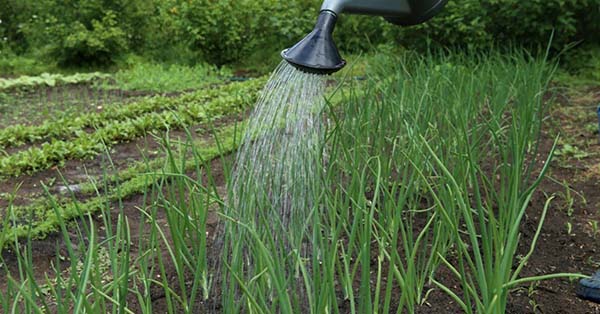
How to feed onions in spring for the growth and development of large bulbs
So, as we found out, in fact, 2 dressings will be enough for onions - the first nitrogen and the second phosphorus-potassium. Now it is worth figuring out what nitrogen and potassium-phosphorus fertilizers are, as well as how to prepare them (dilute with water).
Nitrogen fertilizers
The following can be used as nitrogen fertilizers for the first feeding of onions in spring:
- Ammonium nitrate (prepare a solution - 15 grams per 10 liters and water).
Advice! About, how to use ammonium nitrate for plant nutrition detailed in this article.
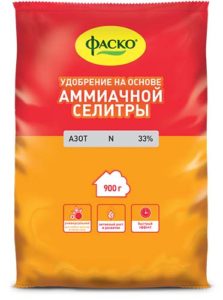
- Urea (carbamide). Prepare the solution on the basis of 10-12 grams per 10 liters.
By the way! The site also has a separate material about how to use urea for plant nutrition.
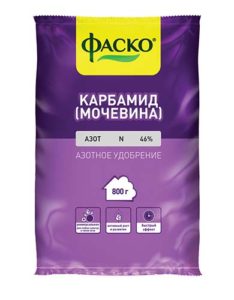
Advice! In cool weather (up to +15) it is better to use ammonium nitrate, and in a warmer one (above +15 .. + 20 degrees) - urea (under such conditions, it dissolves better and is absorbed by the plant).
- Fresh and rotted (dry) manure of various types (horse, pork, cow, poultry - chicken, fresh is diluted, as a rule, 1 to 10-20 with water).
Important! From the use of slurry (fresh fermented manure), worms very often start in onions, and if the plucked feather is not washed and eaten well, then in addition, you can also become infected with helminths (worms).
- Cow dung or mullein (if fresh, then about 1 to 15-20, if concentrated, then according to the instructions);
- Poultry droppings (fresh 1 to 10-15, if dry, then look according to the instructions)
Video: feeding onions with a solution of chicken manure
- Green fertilizer (infusion of nettle, dandelion, plantain).
Potash and phosphate fertilizers
- potassium sulfate (potassium sulfate);
- superphosphate (simple or double);
However! These fertilizers dissolve for a long time and the plant will not be able to receive them on time, so in this case you can buy quite expensive potassium monophosphate or ... cook superphosphate extract... In principle, you can still use wood ash (but this is more of a potash fertilizer, it contains very little phosphorus).
Advice! Next time, carefully fill the garden with phosphorus-potassium fertilizers (potassium sulfate and superphosphate) in the fall.
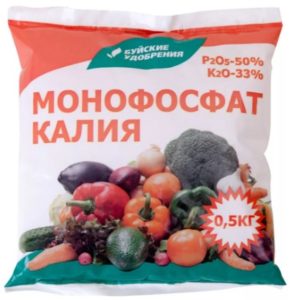
- wood ash (solution or infusion-extract, 100-200 grams per 10 liters of water, let stand for 1-2 days).
By the way! The site has a separate article about how is wood ash useful for plants, when and how to use it in horticulture.
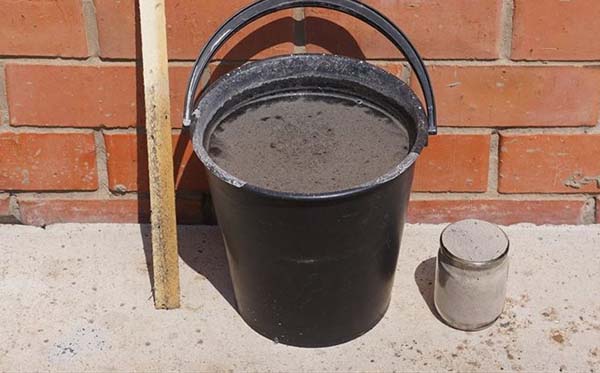
By the way! It is not necessary to water it at the root. Alternatively, you can simply sprinkle the ash over the bed (or even powder it) and then spill it with water.
Video: feeding onions with ash
Special fertilizers for onions
Now on sale there is a huge number of ready-made dressings for individual (specific) crops, including for onions:
- organomineral fertilizer for onions and garlic from Fasco;
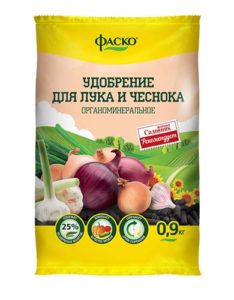
- organo-mineral fertilizer for onions and garlic from the Fertik company (with humates);
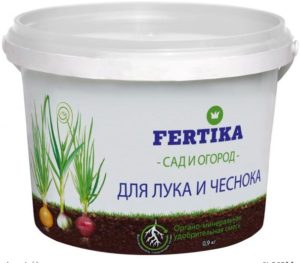
- Agricola for onions and garlic and many others.
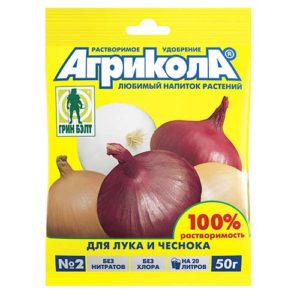
Folk remedies for feeding garlic
Ammonia (ammonia)
Recently, the use of pharmacy products for feeding and protecting various crops from diseases and pests has become popular among the people; onions have also not been spared.
So, for example, according to the author of the video below, ammonia solution or ammonia (as a source of nitrogen) is an excellent tool that is both a top dressing and a means of combating the main pest of onions - onion fly.
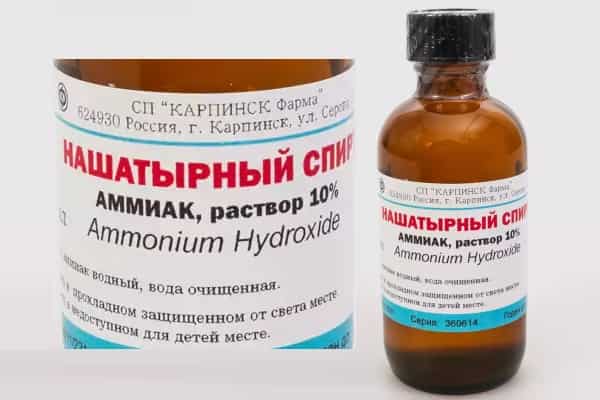
Universal feeding (nutritious cocktail from Aunt Tanya)
Recipe for feeding onions from Aunt Tanya: place the 200 liter barrel in the sun, insert the bag inside. Then fill 1/3 with nettles (preferably dried), add 1 bucket of manure or annual humus (as an option, you can use the humus of bird droppings). Add half and a whole bucket of wood ash (3-5 kg), 1-2 kg of compressed yeast, 3-5 liters of milk whey there and pour water to the top. Then cover with another bag. Let it brew for 2 weeks, while stirring once every 3-4 days. Then pour 2 liters of infusion into 8 liters of water and water the plants.
Actually, you can watch for yourself the next video from "Sadovaya's head" about feeding onions.
How to feed the bow so that it does not shoot
Very often it happens that the bow drives out the arrow (arrow).
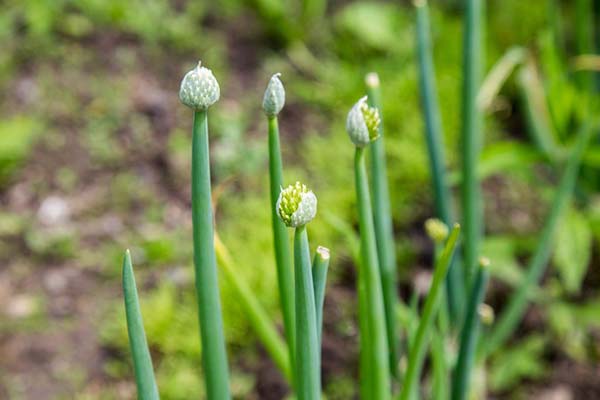
The reasons for this negative phenomenon may be:
- improper storage of bulbs and their absence preparation (processing) before disembarkation (it depends on you);
- passing the stage of vernalization with bulbs during the cultivation process (it does not depend on you, but you can influence).
The fact is that if the weather is cool and the temperature regime remains in the range from +5 degrees to +15 degrees for a long time, then the growth points that are laid in the bulbs go through the stage of vernalization, i.e. plants adapt to growing in cold conditions. As a result, this speeds up the process of flowering and planting seeds, i.e. the plant tries to multiply faster.
In this case, it is precisely first nitrogen fertilization, thanks to which, even in relatively cool weather, the bow will not shoot, because will receive the necessary nutrition to continue its development.
To prevent the bow from shooting, it can be specially prepared for planting. For example, heat the bulbs in hot water (50-60 degrees) for 15-30 minutes.
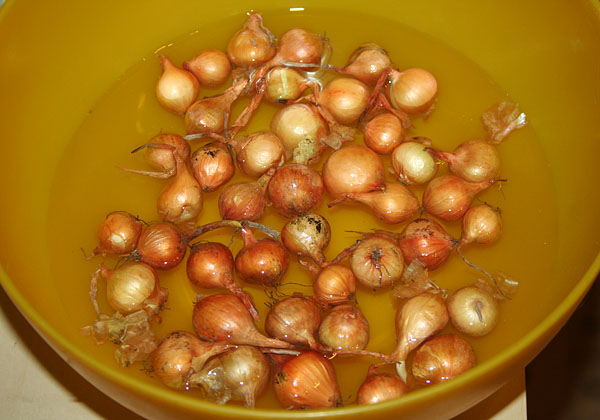
Thus, now you know when and what you can feed onions in spring and summer in order to increase the yield of large and juicy bulbs.
Video: how to feed onions in spring for good development

